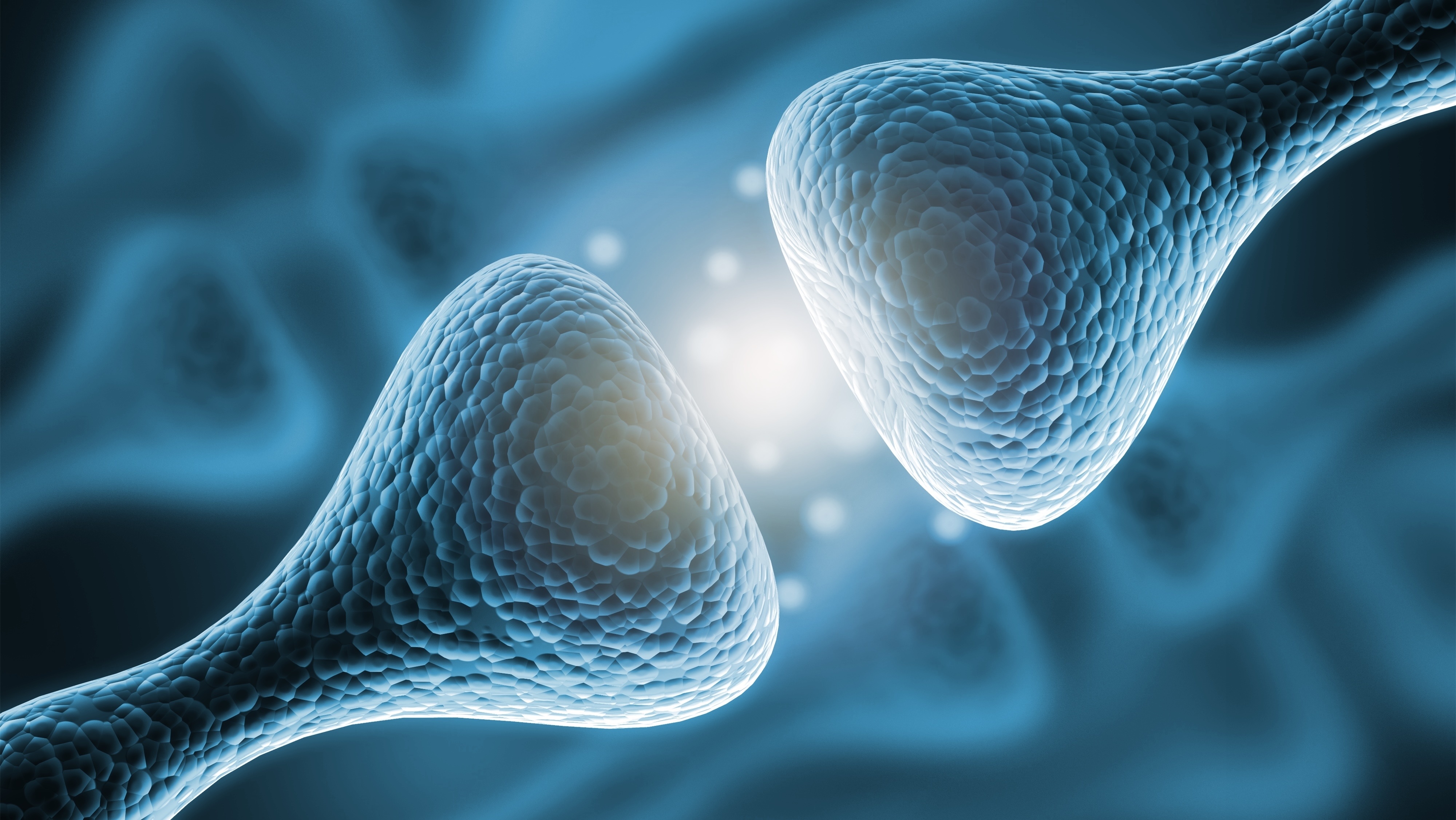
General anesthesia is a drug-induced, reversible condition characterized by distinct behavioral and physiological features – including unconsciousness, amnesia, analgesia, and akinesia – as well as physiological stability of the autonomic, cardiovascular, respiratory, and thermoregulatory systems.1 Research on the action of anesthetic drugs in the central nervous system provides some insight into the molecular and pharmacological principles that underlie general anesthesia.2
One potential molecular mechanism of general anesthesia involves GABAA-mediated altered arousal.2,3 Anesthetic drugs, such as propofol, sodium thiopental, methoxital, and etomidate, may induce sedation and unconsciousness by acting as agonists at GABAA receptors, which are widely distributed throughout the brain.2 When bound to their natural ligands, GABAA receptors undergo a conformational change and form chloride channels, allowing chloride ions to flow down their concentration gradient into the cell.4 This hyperpolarizes the cell membrane and ultimately decreases the activity of neurons.4 Propofol – and similar anesthetic drugs – act as GABAA receptor agonists by mimicking the biological activity of these natural ligands, i.e. opening chloride channels and decreasing neural activity. For example, during wakefulness, pyramidal neurons in the cortex receive a balance of excitatory input (from the major cholinergic, monoaminergic, and orexinergic arousal pathways) and inhibitory input (from local inhibitory interneurons). During GABAA-mediated altered arousal, however, the activation of GABAA receptors results in increased inhibitory input.2 Because a small number of interneurons regulates a large number of pyramidal neurons, administration of GABAA receptor agonists can lead to the inactivation of large regions of the brain.2
When administered for induction of general anesthesia, hypnotics rapidly reach the GABAergic neurons in the respiratory centers in the pons and medulla6 and arousal centers in the pons, midbrain, hypothalamus, and basal forebrain.7 The ensuing clinical signs are consistent with the inhibitory activity of GABAergic hypnotics.2 For example, the loss of the oculocephalic and corneal reflexes is explained mechanistically by the biological action of hypnotic agents at the nuclei that control eye movements in the midbrain and pons.2 Atonia, observed after bolus administration of propofol, may be attributed to agonistic activity in GABAergic circuits in the spinal cord and in the pontine and medullary reticular nuclei, which control anti-gravity muscles.2 Similarly, the action of hypnotics on GABAA interneurons in the respiratory control network in the ventral medulla provides a molecular explanation for apnea.2 And finally, it is understood that GABAergic hypnotics contribute to sedation and unconsciousness by enhancing inhibitory activity at thalamic reticular neurons which project onto the cortex.2
The molecular principles of GABAA-mediated altered arousal shed light on the behavioral and physiological effects of general anesthesia. As demonstrated above, the molecular activity of anesthetic drugs at GABAergic circuits provides an explanation for apnea, atonia, sedation, unconsciousness, and other clinical signs of general anesthesia. That said, further research is needed to achieve a more rigorous understanding of the mechanism of general anesthesia.
References
- Brown EN, Lydic R, Schiff ND. “General anesthesia, sleep and coma.” N Engl J Med. 2010; 363(27): 2638–50.
- Brown, Emery N et al. “General anesthesia and altered states of arousal: a systems neuroscience analysis.” Annual review of neuroscience vol. 34 (2011): 601-28.
- Bowery NG, Hudson AL, Price GW. “GABAA and GABAB receptor site distribution in the rat central nervous system.” Neuroscience. 1987; 20 (2): 365–83.
- Jakubowski, H. “Agonist and Antagonist of Ligand Binding to Receptor.” Biology LibreTexts.
- Bai D, Pennefather PS, MacDonald JF, Orser BA. “The general anesthetic propofol slows deactivation and desensitization of GABA(A) receptors.” J Neurosci. 1999; 19(24): 10635–46.
- Feldman JL, Mitchell GS, Nattie EE. “Breathing: rhythmicity, plasticity, chemosensitivity.” Annu Rev Neurosci. 2003; 26: 239–66.
- Saper CB, Scammell TE, Lu J. “Hypothalamic regulation of sleep and circadian rhythms.” Nature. 2005; 437 (7063): 1257–63.

